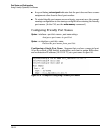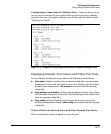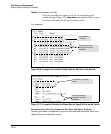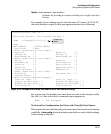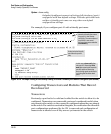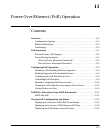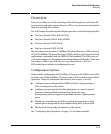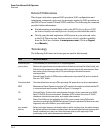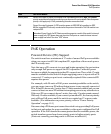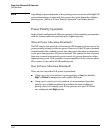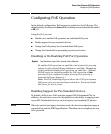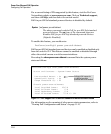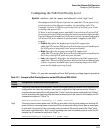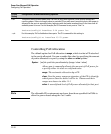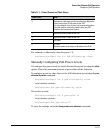
Power Over Ethernet (PoE) Operation
Overview
Related Publications
This chapter introduces general PoE operation, PoE configuration and
monitoring commands, and event log messages related to PoE operation on
the HP ProCurve Series 2520 and 2520G switches. The following two manuals
provide further information:
■ For information on installation, refer to the HP ProCurve Series 2520
Switches Installation and Reference Guide provided with the switch.
■ To help you plan and implement a PoE system in your network, refer
to the PoE Planning and Implementation Guide, which is available
from the ProCurve website at www.procurve.com. (Click on Support,
then Manuals.)
Terminology
The following PoE terms and concepts are used in this manual.
Term Use in this Manual
active PoE port A PoE-enabled port connected to a PD requesting power.
priority class Refers to the type of power prioritization where the switch uses Low (the default), High, and
Critical priority assignments to determine which groups of ports will receive power. Note
that power priority rules apply only if PoE provisioning on the switch becomes
oversubscribed.
EPS External Power Supply. An EPS device provides power to provision PoE ports on a switch.
See also “RPS” below.
Oversubscribed The state where there are more PDs requesting PoE power than can be accommodated.
MPS Maintenance Power Signature; the signal a PD sends to the switch to indicate that the PD
is connected and requires power. Refer to Figure 11-6 on page 19.
PD Powered Device. A device that receives power through a direct connection to a 10/100
Base-TX PoE RJ-45 port on the switch. Examples of PDs include Voice-over-IP (VoIP)
telephones, wireless access points, and remote video cameras.
PoE Power-Over-Ethernet; the method by which PDs receive power from a PoE module
(operates according to the IEEE 802.3af standard). Some pre-standard PoE devices are also
supported; refer to the FAQs for your switch model.
port-number
priority
Refers to the type of power prioritization where, within a priority class, the switch assigns
the highest priority to the lowest-numbered port, the second-highest priority to the second
lowest-numbered port, and so-on. Note that power priority rules apply only if PoE
provisioning on the switch becomes oversubscribed.
11-4



